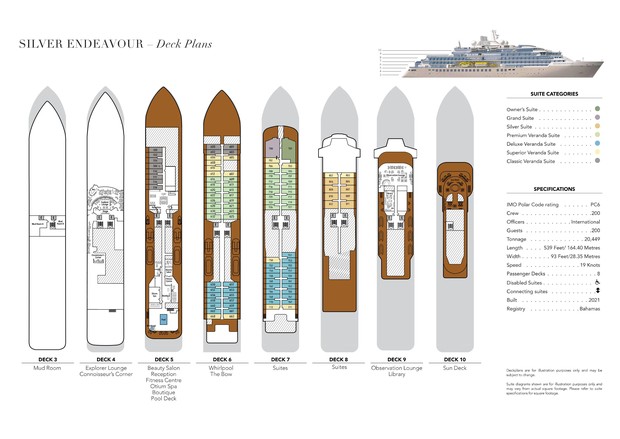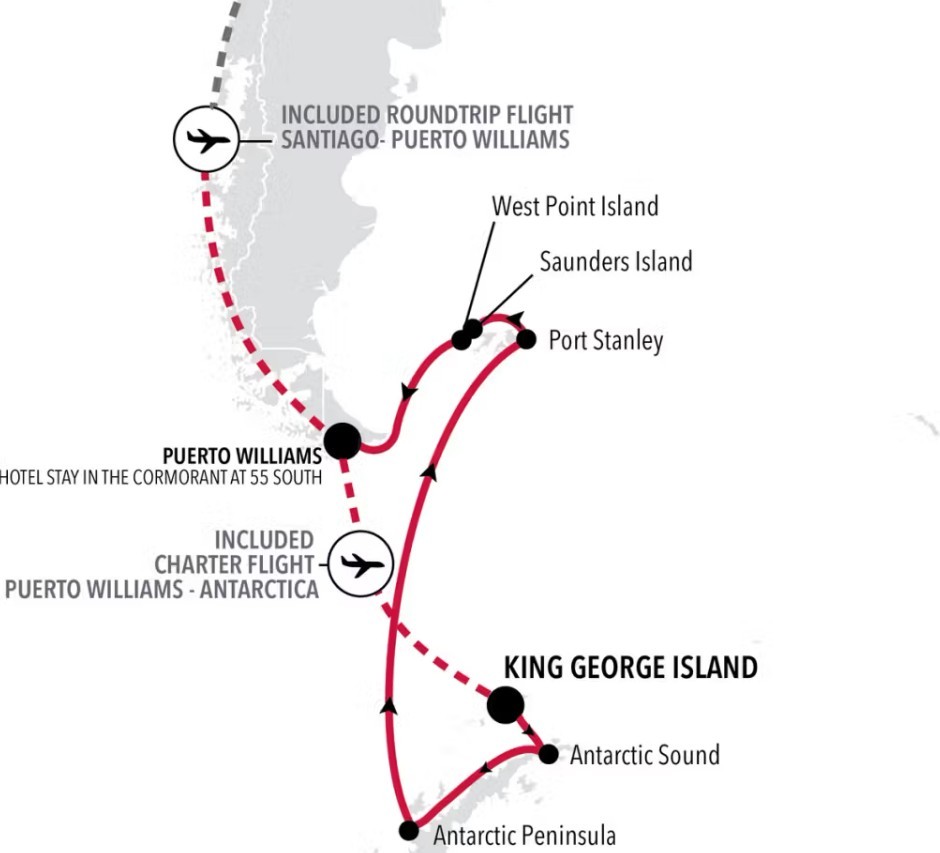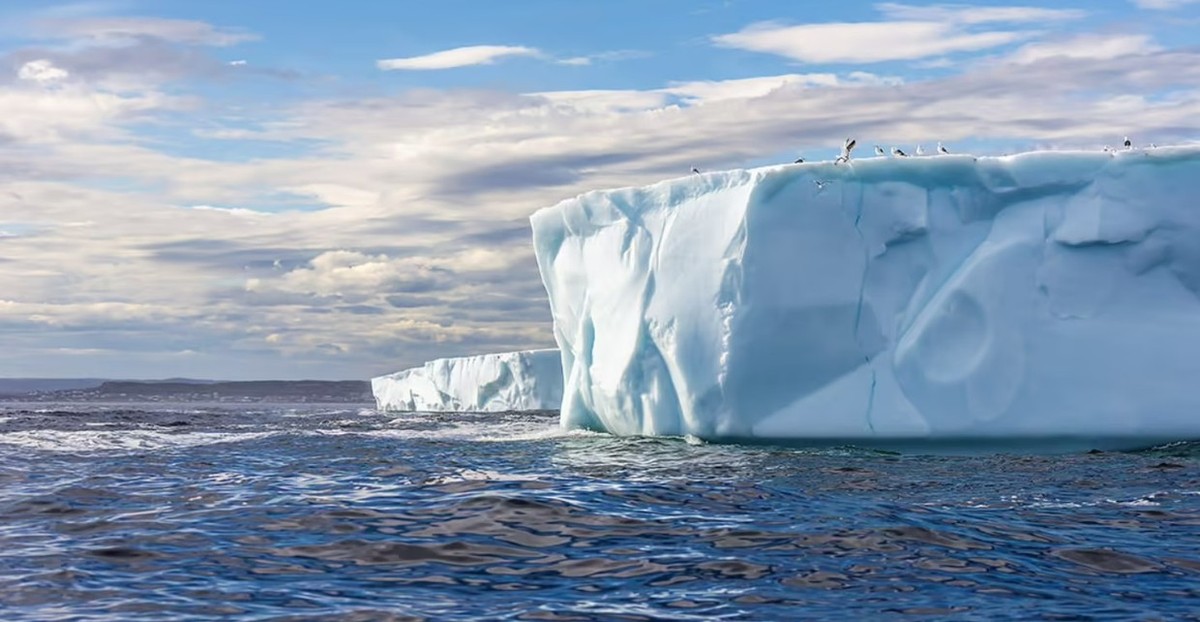
Start 2027 on an extraordinary high, exploring the very bottom of the globe. Spend nearly two weeks immersed in the staggering beauty of Antarctica and the Falkland Islands. Get up close with iconic wildlife while discovering the Antarctic Peninsula - from gliding albatross and breaching humpbacks to hopping gentoo penguins. Then conquer the legendary Drake Passage to spot the rare seabirds of the isolated Falklands, before reaching Chile's dramatic Land of Fire.
Some departures may have slightly modified itineraries. Please confirm the itinerary with an Expedition Specialist.
- Cruise through the icy majesty of the Antarctic Peninsula, with multiple excursions to encounter penguins, seals, and breathtaking glaciers.
- Cross the legendary Drake Passage and explore the rugged wildlife havens of the Falkland Islands, including Port Stanley and Saunders Island.
- Conclude your adventure in Puerto Williams, the world’s southernmost town, surrounded by stunning Patagonian landscapes.
Availability is always subject to confirmation. Please check with us before booking flights
Prices quoted here are often dependent on currency fluctuations. Please check with (01432 507450 or info@small-cruise-ships.com) for the very latest price, which may well be cheaper than the one advertised here.
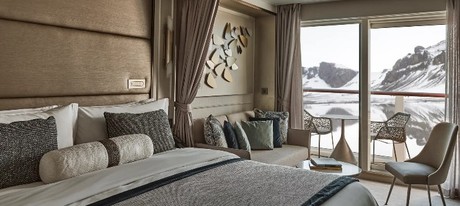
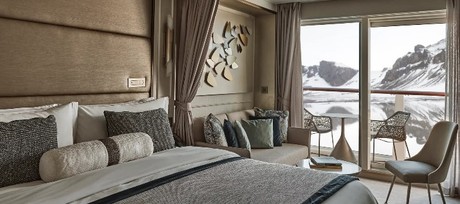
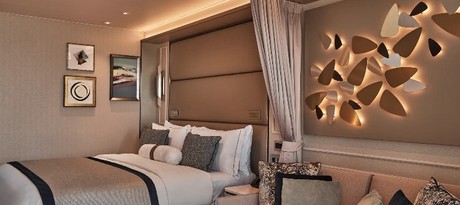
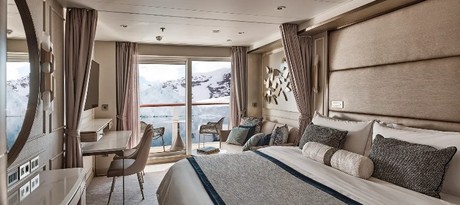
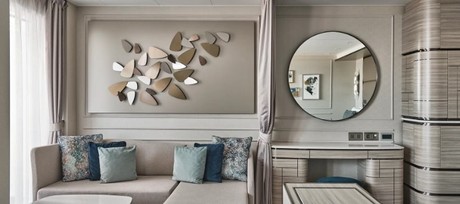
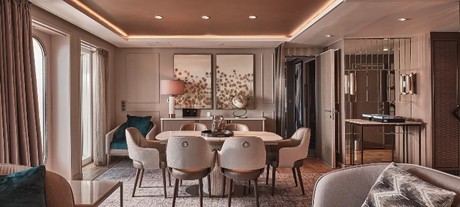
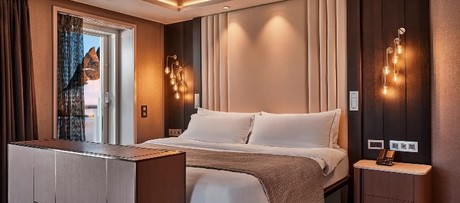
Prices quoted here are often dependent on currency fluctuations. Please check with (01432 507450 or info@small-cruise-ships.com) for the very latest price, which may well be cheaper than the one advertised here.







Pre Cruise Benefits
Charter flights
Hotel
Charter flights
As the largest of all the South Shetland Islands, King George is considered the gateway to Antarctica. At just 120 kilometers from the Antarctic Peninsula and the only airport in the South Shetlands, it is the connection between “real life” and “Antarctic life”. More than 10 different nations have year-round or summer-only scientific research stations on the island (considering that 90% of the island is covered by snow and ice, that is quite an achievement!). Maintaining a base on the island allows membership in the Antarctic Treaty. There is even a Russian Orthodox church, with a permanent on-site priest. The island might be home to a few international scientists, but they are very much outnumbered by the diverse wildlife that considers King George Island rightfully theirs. Adelie, Chinstrap, and Gentoo Penguins all commute to and from the Antarctic Peninsula from the island, while Weddell and leopard seals are regular visitors and can be spotted either in the water or on the shore. Naturally, this brings a huge amount of birdlife: skuas and southern giant petrels are regular summer residents, attracted by the warm climate (warm being a relative term, average temperature is between 1.5 and -6.5˚C). The island was named after King George III after a British explorer discovered it in 1819. Since then the island has been claimed by both Chile (1940), and Argentina (1943), but remains part of British Antarctic Territory.
Few voyages ignite the imagination like a journey down to one of the planet’s most remote, extreme, and enchanting wilderness, Antarctica. An adventure in its purest form, only a handful of people will ever be lucky enough to experience the majestic beauty of these monochrome landscapes first-hand. The Antarctic Sound will be one of your first encounters with this whitewash kingdom, located at the northerly tip of the Antarctic Peninsula - which sprawls up like a tentacle towards Tierra del Fuego, South America’s most southerly point, otherwise known as the "End of the World". Taking its name from the first ship to brave the passageway between the peninsular and the Joinville Island groups back in 1902, the Sound is a raw, sensory assault of imposing iceberg slabs, broken away from the disintegrating Larsen Ice Shelf. Come face-to-face with arena-sized islands of ice and meet the extraordinary birdlife that calls this whitewash kingdom home. Watch on, as colonies of Gentoo penguins hop around, and cape petrels sweep overhead, as the continent’s unique wildlife thrives around you. If you’re planning your first venture into Antarctica, you’ll want to brush up on your photography skills in advance, to capture this unforgiving continent in all of its unrestrained glory.
The Antarctic Peninsula unravels upwards towards South America, reaching out a beckoning finger to the adventurous, who dare to explore this untamed realm. Stretching up from the heart of the world’s southernmost continent, the Antarctic Peninsula lies a mere 620 miles from Tierra del Fuego and, for many, offers a spectacular first taste of the snow-blanketed landscapes and colossal ice sculptures, which make up Earth’s least-explored continent. Unseen by humans until 1820 - a blink of an eye ago in relative terms - this is an adventure sure to make your hairs stand on end, as you experience the thrill of the truly unknown and extraordinary. The vast peninsula is sprinkled with research bases, which are at the frontline of human scientific endeavor, pushing to study and understand this unique landscape, its exceptional wildlife, and the impact that humans are having on this pristine continent. Witness cathedral-sized icebergs up close, and blue-hued glaciers, slowly slipping from imposing locations like Hope Bay. Blanched mountain peaks cover the peninsula, and you’ll find thousands of adorable Adelie penguin pairs thriving undisturbed in this peninsula’s unique setting.
Sailing the legendary Drake Passage is an experience that few are ever lucky enough to experience. The southern tip of the Americas already feels like a wild enough environment – but the sensation of watching the distant cliffs of the peninsular known as the "End of the World" fade into the horizon, is one that’s equal parts epic, eerie, and magical. Set sail, to slowly drop off the bottom of the map from Cape Horn, and voyage on an expedition down into the icy underworld of Antarctica. Drake Passage is an extraordinary voyage of romantic ocean-faring legend, as you aim for Antarctica’s icy realm. On arrival, skyscraper-sized icebergs salute you, as you traverse the waters of this continent where snow and ice-dwelling creatures like penguins and whales roam undisturbed. Your first sight of this most unexplored place will most likely be the South Shetland Islands. Walk in the footsteps of some of history’s greatest and bravest explorers as you explore famed, snow-covered landmasses like Elephant and Deception Island. If the journey across Drake Passage sounds daunting, don’t worry – even in rough seas you’re never alone, and will often be accompanied on this spine-tingling adventure by soaring albatrosses and maybe even a protective pod of humpbacks and hourglass dolphins or two. Converging warm and cool ocean currents attract some spectacular animal life to the passage.
Despite it being a stalwart of Britishness, Stanley more resembles Patagonia than Portsmouth. But, despite the windswept, vast, and achingly beautiful landscape of the Falkland Islands, don't be too surprised to find the odd pub serving ales and even fish'n'chips. While landmarks such as Christ Church Cathedral, with its whalebone arch, are 100% local, there is a also good smattering of imported garden gnomes and Union Jacks to remind you whose territory you are really on. The Falkland Islands’ ownership has long been a matter of controversy, ever since colonization in the 18th century. At various points in their life they have been considered French, British, Spanish, and Argentine. The Falklands War in 1982, despite only lasting for a short while, proved that the Brits clung to this remote outpost and the islands remain part of the British Commonwealth today. Margaret Thatcher, under whom the war was masterminded, remains something of a local hero as can be seen in the street signs (such as Thatcher Drive). For those who want to dig deeper into the past, the Historic Docklands Museum provides lots of information on the chequered historical and political background of the Falklands. However, the true heroes of Stanley are of course the thousands and thousands of penguins. Five species nest here during mating season (including the rare rockhopper penguin). There are virtually no barriers between you and the wildlife; allowing for a truly interactive, authentic, and totally unforgettable experience.
Meet some of the world’s most incredible wildlife, on the remote Saunders Island. Sitting to the north-west of the Falkland’s archipelago, the British established their first settlement here in 1765, at Port Egmont. Remote, wild, and wonderful, the island now serves as a lush grazing ground for plenty of sheep - but it's an astonishing place to encounter far rarer animals - from elephant seals to silvery grebes and Peale’s dolphins. Connected by sinewy links of beach and sandy dunes, which create some of the most dramatic scenery in the Falklands, the archipelago’s fourth biggest island is home to its best birdlife - including a colony of neatly tuxedoed king penguins. Saunders Island's topography tightens at The Neck - where you'll find even more penguin activity. Colonies squark and chatter in huge crowds here, with Gentoo, Rockhopper, and Magellanic penguins dipping into the water, and clambering over boulders. A gentle hike to the summit of Mount Richards will take you 457 meters above sea level, offering an expansive overview, from which you can look out across the tips of the moody waves to see Carcass Island and West Point Island emerging. The cliffs to the north of the mountain host rare black-browed albatross - a sight of sheer grace in flight - but comically clumsy at times when landing. Elsewhere, wide lakes are home to various water birds - including the rare black-necked swans.
A north-westerly outpost of the scenic Falkland Islands, you'll be welcomed ashore by the calls and cries of a huge colony of black-browed albatross. Indeed, the island was originally known as Albatross Island before being renamed to reflect its geographic location. While the albatrosses - that flash white feathers in the rugged cliffs above the waves - are the most well-known residents, they are far from the only animal inhabitants of this remote, isolated land. A huge army of birdlife calls the island sanctuary home, overwhelming the tiny human population and sheep that roam West Point Island's grasses. Meet the rockhopper penguins who scamper and burrow along the coast's boulders, as well as the imperial cormorants who rest here in great numbers. You're also likely to encounter Magellanic penguins during your explorations. Hike the island's quiet landscapes and look out for endemic plants like Felton's flower carpeting the green interior. Decorated with some of the archipelago's most dramatic scenery, explore this wind-lashed, distant land of soaring cliffs and towering coastal precipices. Cliff Mountain is the island's standout - a towering sandstone monolith, and the archipelago's highest cliff, falling away to swirling waves below. Look out to the waters to spot Commerson's dolphins chasing each other around the island's wave-washed footprint. Whales also visit, as well as the fur seals who you may spot lounging around West Point Island's inviting shores.
Days at sea are the perfect opportunity to relax, unwind, and catch up with what you've been meaning to do. So whether that is going to the gym, visiting the spa, whale-watching, catching up on your reading, or simply topping up your tan, these blue sea days are the perfect balance to busy days spent exploring shoreside.
Puerto Williams is a Chilean city located on Navarino Island on the southern shores of the Beagle Channel. It claims to be the “southernmost city in the world”, however owing to its small size – 2,500 residents approximately – the much larger Argentinean city of Ushuaia, which sits on the northern side of the same channel, also claims that title. The surrounding scenery is magnificent. The wild windswept mountains rise above the tree line and are regularly dusted with snow. The city itself has the dramatic backdrop called “Dientes de Navarino” (literally “teeth of Navarino”), which rivals the famous Torres del Paine further to the north. The area was originally used by the Yaghan people, hunter-gatherers who despite enduring the harsh regional climate, could not weather the arrival of Europeans. The current city was established as a naval base in 1953 and honors the British-Chilean naval commander John Williams Wilson of the 19th century. Initially it served to protect territorial possessions and fishing rights of the area, as well as offering logistical support to Antarctic bases. More recently it has become a departure point for scientific and tourism trips to the Antarctic region. In contrast to the bustle and traffic of a very commercial Ushuaia, Puerto Williams offers a quieter, more relaxed experience. It charms the visitor with a small village feel, complete with rustic buildings and the homely smell of drifting wood smoke. A haven of peace at the end of the world.
Post Cruise Benefits
Charter flights
Itineraries are subject to change.
Silver Endeavour
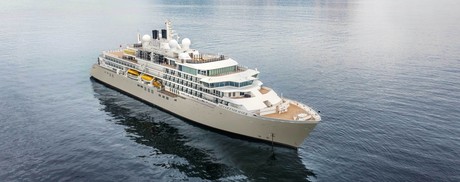
| Built | 2021 |
|---|---|
| Capacity | 200 passengers |
| Wheelchairs | Accessible suites available |
| Length | 164.40 metres |
Designed for polar exploration, Silver Endeavour breaks the ice of luxury expedition travel.
Built to PC6 Polar Class specifications – one of the highest Polar Class classifications there is – Silver Endeavour revolutionises our expedition voyages, and allows travel deeper to some of the planet’s farthest flung coasts. Her statistics speak for themselves: from unrivalled, industry-leading crew-to-guest, zodiac-to-guest and expert-to-guest ratios, to cutting-edge navigation and exploration technology and hallmark Silversea comfort make her the most luxurious expedition ship ever built.
Spread over eight public decks, not only does she feature ample onboard space, multiple restaurants, plus a huge choice of bars and lounges, but her large and luxurious suites are some of the best in expedition cruising. Superbly designed, all her suites feature a balcony and our highest standards of service thanks to an impressive crew-to-guest ratio of 1:1.
Mud Room
Silver Endeavour’s Mud Room is the perfect place to prepare for all your expedition activities. Spaciously designed, the two mud rooms are superbly modern, and equipped with state-of-the-art equipment.
Explorer Lounge
Strategically located mid-ship on deck 4, the Explorer Lounge is the operational heart of shore excursions while onboard. This is where you’ll attend your daily recap and briefing sessions or attend lectures.
Connoisseur’s Corner
The Connoisseur’s Corner is an indulgent and sophisticated cigar lounge, where you can enjoy an after dinner drink in a cosy private club atmosphere.
Otium Spa
Otium is where you can relax and unwind, but also where you can enjoy world class treatments that make sure you look as good as you feel and that even Venus herself would envy.
Observation Lounge
The Observation Lounge offers one of our favourite vantage points of Silver Endeavour. Plus 270-degree surrounding glass windows make this immersive venue ideal whatever time of the day.
Beauty Salon
Our committed and competent team of beauty therapists is here to help keep your hair, nails, skin, and body healthy and happy.
Fitness Centre
Whether you are a serious keep fit fanatic or casual athlete, you’ll find what you’re looking for in Silver Endeavour’s Fitness Centre. Expertly designed classes and personal training sessions make sure that you keep in shape.
Boutique
Located mid-ship on Deck 5, the Boutique aboard Silver Endeavour means luxury shopping experiences do not end just because you’re at sea! Carefully selected partners offer a wide selection of the latest fashions.
Pool Deck
Surrounded by glazing extended all the way to the top of the venue, the Pool Deck gives you the feeling of always being connected to the sea. The glass-enclosed pool deck is the ideal place to enjoy breathtaking views.
Library
Whether you’re an avid bibliophile or simply prefer a quiet place while at sea, it’s hard not to fall in love with Silver Endeavour’s onboard library, with its beautiful reference books, comfortable chairs and stunning scenery.
Deck plans are for illustrative purposes only – The actual ship and cabin layout may differ.
